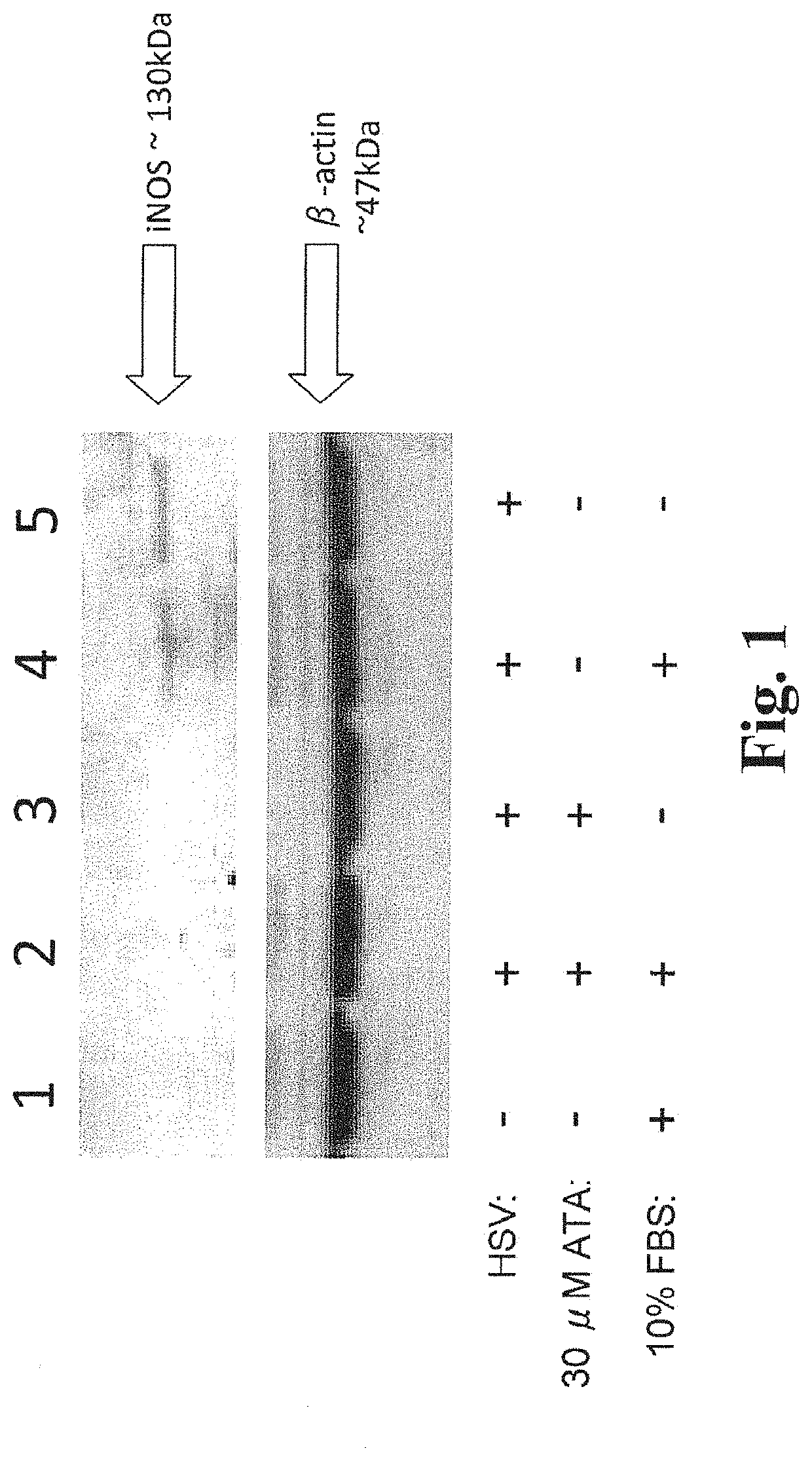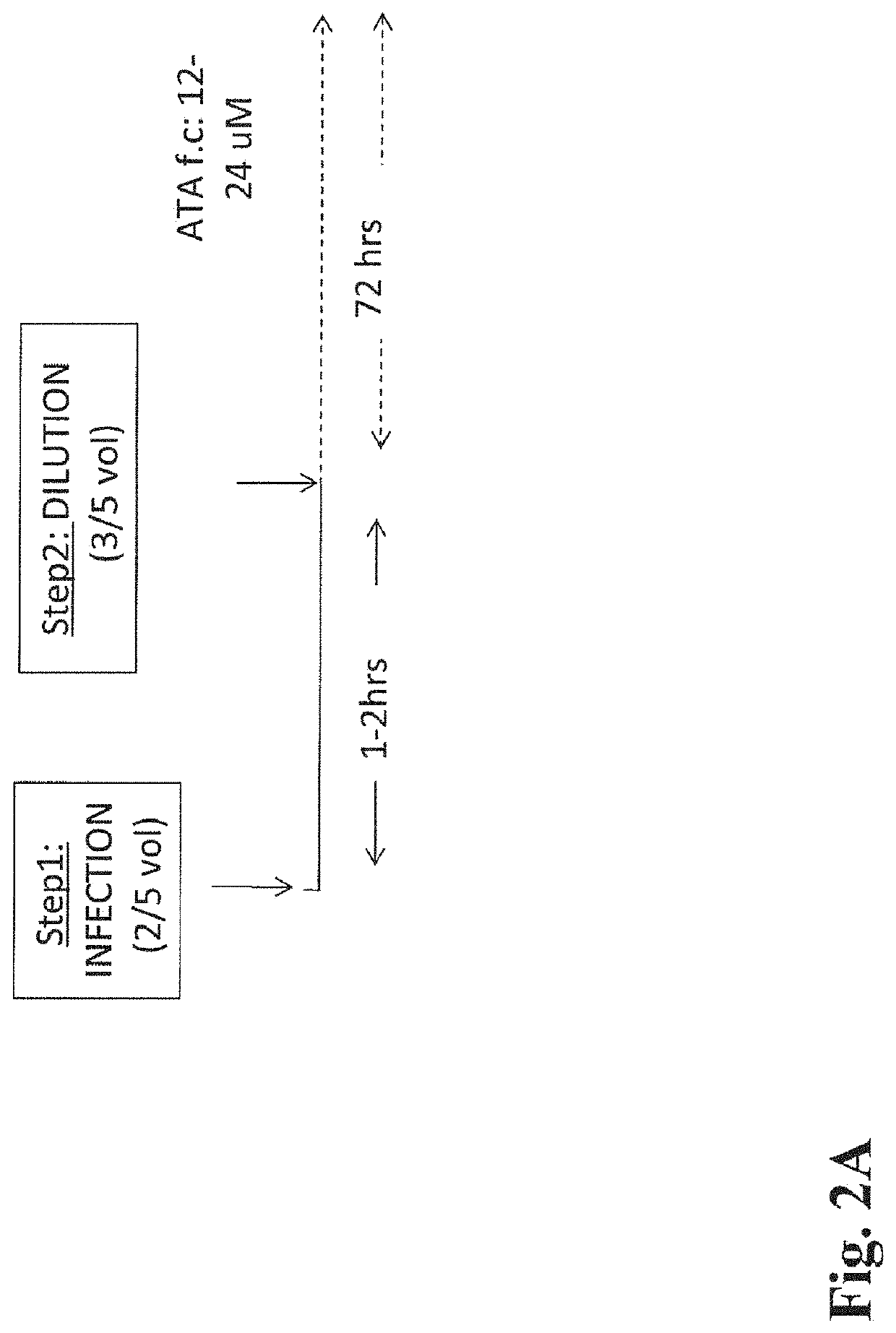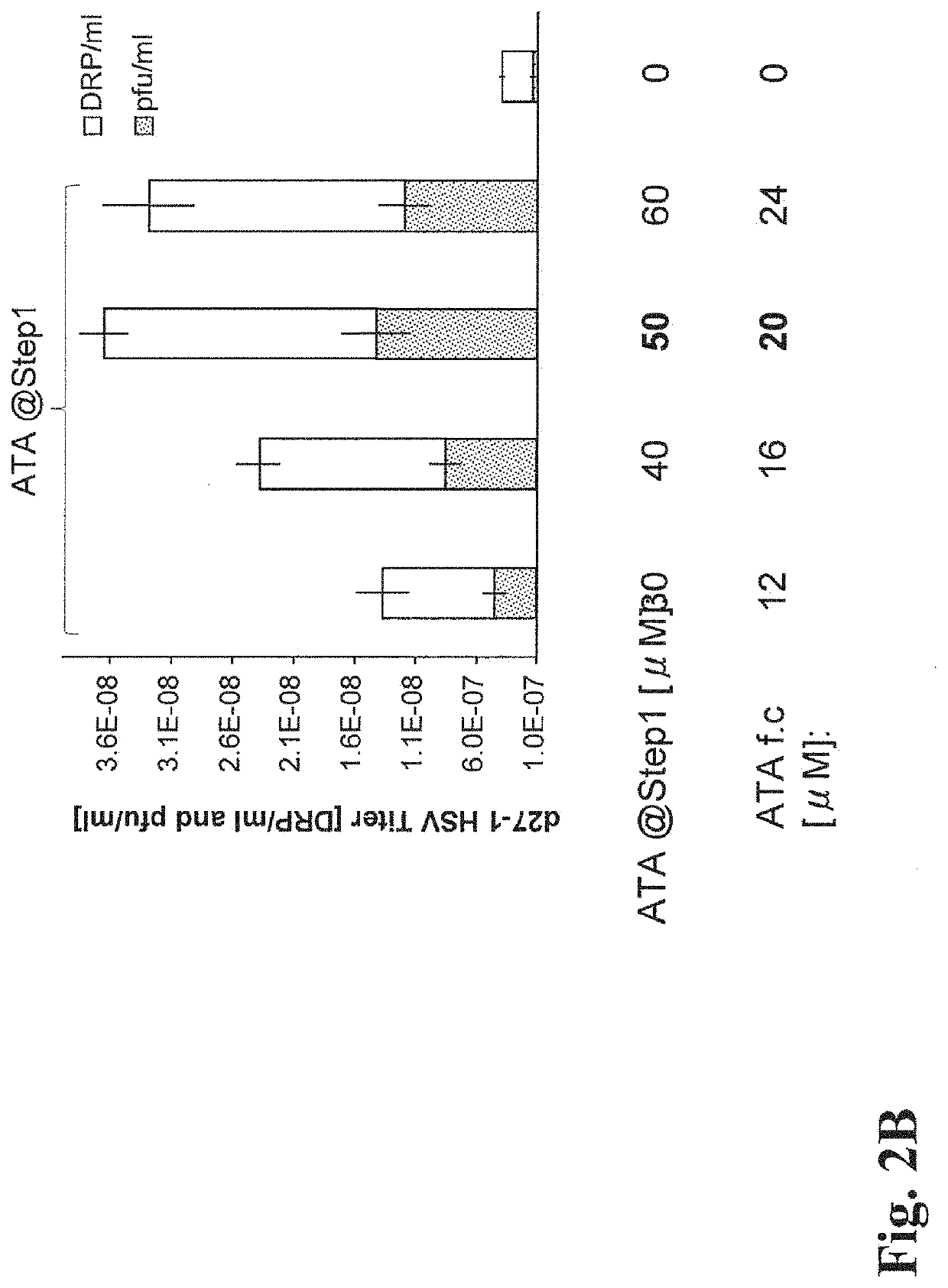USE OF iNOS INHIBITORS TO INCREASE VIRAL YIELD IN CULTURE
a technology of inos inhibitors and culture, which is applied in the direction of viruses/bacteriophages, antibody medical ingredients, dsdna viruses, etc., can solve the problems of limited raav yield, large quantity of clinical grade high-titer raav for gene therapy, and severe restriction of ectromelia replication, etc., to achieve low production of rhsv and hamper efforts
- Summary
- Abstract
- Description
- Claims
- Application Information
AI Technical Summary
Benefits of technology
Problems solved by technology
Method used
Image
Examples
example 1
Inhibition of HSV-Induced iNOS Levels in V27 Cells using ATA
[0118]V27 cells in Dulbecco's Modified Eagles Medium (DMEM) (Hyclone, Waltham, Mass.) were infected with the HSV-1 d27.1 vector at an MOI of I and treated with 30 μM ATA (Sigma, St. Louis, Mo.), with or without 10% fetal bovine serum (FBS). Control experiments without ATA were also performed. V27 cell lysates were obtained 24 hours post infection (h.p.i.) and Western blots were run on the lysates and iNOS protein was detected by using purified rabbit anti-INOS / NOS Type II pAb (ED Biosciences, Cat #610332). Results are shown in FIG. 1.
[0119]As shown, HSV infection induced INOS expression in those cultures that did not include ATA (lanes 4 and 5). INOS expression was inhibited in the presence of 30 μM ATA (lanes 2 and 3). The presence or absence of 10% FBS did not have an effect on iNOS expression.
example 2
Optimization of ATA-HSV Protocol
[0120]In order to test whether ATA could increase the rHSV-1 d27-1 (d27-1) vector yield in V27 cells, ATA was applied to the media during the infection (Step 1) or dilution steps (Step 2) (FIG. 2A). The d27-1 infection at MOI=0.15 was performed in ⅖ of the final media volume and the remaining ⅗ of the media was added during dilution step.
[0121]ATA treatment delayed HSV-1 plaque formation or cell lysis in V27 cell monolayers. Cytopathic effect (CPE) at the time of harvest, 72 hours post-infection, (hpi) was between 20-60% as compared to 100% CPE in the absence of ATA. Treatment with ATA during the HSV-1 infection step (ATA at Step 1) showed increased d27-1 titers in V27 cells supernatants harvested at 72 hpi (FIG. 4B). The optimal ATA concentration when added during the infection step (ATA 1) was 50 μM and this was further diluted to the final concentration (f.c.) of 20 μM ATA during the dilution step by adding the remaining ⅗ vol of the media. In this...
example 3
Importance of Serum Presence in ATA-HSV Protocol
[0127]Additional experiments were conducted to determine optimal conditions and the effect of the presence or absence of FBS on HSV titer. The serum presence, specifically, 10% fetal bovine serum (FBS), in ATA-containing media was the most important parameter for the ATA-induced HSV-1 titer yield. A supplementation of ATA into serum-free media during the dilution step (ATA at Step 2) caused reduction of virus titer, where the “DRP” titer was reduced below control level and PFU / ml titer was below detection (FIG. 3). An even more dramatic effect in serum-free media was seen when ATA, starting at 3 μM concentration, was supplemented during the infection Step 1 (data not shown) and both DRP / ml and PFU / ml titers were below the detection limit.
[0128]In this experiment, V27 cells were seeded into six well plates the day prior to infection at 6×105 cells / well. HSV 2× infection solution was prepared as follows: HSV-1 d27.1 stock was added to DM...
PUM
 Login to View More
Login to View More Abstract
Description
Claims
Application Information
 Login to View More
Login to View More - R&D
- Intellectual Property
- Life Sciences
- Materials
- Tech Scout
- Unparalleled Data Quality
- Higher Quality Content
- 60% Fewer Hallucinations
Browse by: Latest US Patents, China's latest patents, Technical Efficacy Thesaurus, Application Domain, Technology Topic, Popular Technical Reports.
© 2025 PatSnap. All rights reserved.Legal|Privacy policy|Modern Slavery Act Transparency Statement|Sitemap|About US| Contact US: help@patsnap.com



